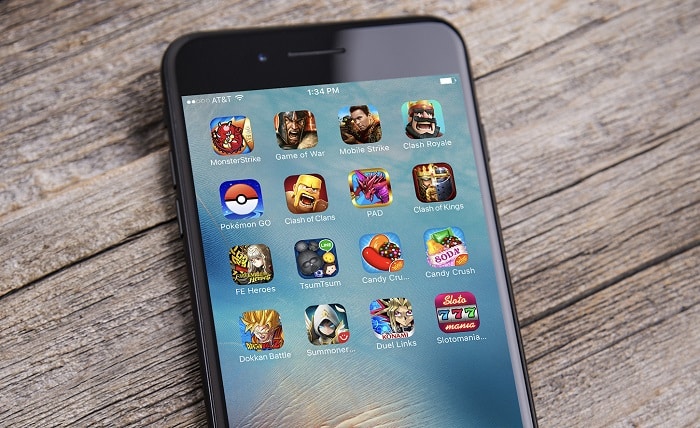Mobile demo slot gratis games have evolved from simple, one-time purchases into complex ecosystems that generate billions of dollars each year. With over 2.7 billion gamers worldwide, the mobile gaming industry is booming, and its monetization strategies have become more sophisticated to capitalize on this massive user base. Game developers are now leveraging multiple monetization models to create steady revenue streams while keeping players engaged. From in-app purchases to ad placements, the industry has adopted a variety of methods to generate income while delivering compelling gameplay experiences.
In this article, we’ll explore the primary methods developers use to monetize mobile games, the challenges they face, and the trends shaping the future of mobile game monetization.
1. In-App Purchases (IAPs)
In-app purchases (IAPs) are one of the most popular and effective ways developers generate revenue from mobile games. IAPs allow players to buy virtual goods, such as cosmetic items, additional lives, boosters, or other in-game assets that enhance their gameplay experience. For example, games like Clash of Clans and PUBG Mobile offer IAPs that allow players to upgrade their characters or speed up progression.
There are two main types of in-app purchases: consumables and non-consumables. Consumable IAPs are items that are used up after being purchased, such as extra lives in a puzzle game or in-game currency like gems or coins. Non-consumable IAPs, on the other hand, are permanent upgrades, such as unlocking a new character, level, or a premium version of the game.
One of the reasons IAPs are so effective is their ability to offer players a free-to-play (F2P) experience with the option to pay for added value. This “freemium” model allows players to try the game before committing to purchases, reducing the barrier to entry while still providing a path for developers to make money. Some games, like Fortnite, generate massive amounts of revenue solely through non-consumable IAPs like skins, costumes, and battle passes, showing that players are willing to spend on items that enhance the visual or social experience, even when they don’t impact gameplay.
2. Subscription Models
Subscription services have become a growing trend in mobile game monetization, allowing developers to generate recurring revenue rather than one-time payments. This model provides players with ongoing benefits, such as exclusive content, in-game perks, or ad-free experiences, in exchange for a monthly or yearly fee.
Apple Arcade and Google Play Pass are prime examples of subscription-based models where users pay a monthly fee to access a library of premium games without ads or in-app purchases. Within individual games, many developers are also offering battle passes or season passes that give players access to exclusive content and rewards over a set period. Games like Call of Duty: Mobile and Clash Royale offer seasonal content through these passes, which encourage players to remain engaged and incentivize them to continue subscribing for new rewards.
Subscription models can provide a more predictable revenue stream for developers, as they rely on long-term player engagement rather than one-off purchases. This method also helps create a loyal player base that is more likely to remain invested in the game, making it easier to retain players and reduce churn.
3. Advertisements
Advertising is one of the most common monetization strategies in mobile games, particularly for free-to-play titles. Developers can integrate different types of ads into their games, including banner ads, interstitial ads (full-screen ads that appear at natural pauses in gameplay), and rewarded video ads.
Rewarded video ads are especially popular because they offer a mutually beneficial arrangement for both players and developers. Players can choose to watch an ad in exchange for in-game rewards, such as extra lives, in-game currency, or a free power-up. For developers, this creates a consistent revenue stream without forcing players to spend money, as they earn revenue every time an ad is watched.
The key challenge with ad-based monetization is striking the right balance between revenue generation and player experience. Overloading players with ads can lead to frustration and cause them to abandon the game altogether. Developers must carefully time ad placements and ensure they offer value to players, whether through rewards or by minimizing interruptions in gameplay.
Additionally, programmatic advertising networks have made it easier for developers to automate and optimize ad placements based on user data, increasing the effectiveness and revenue potential of ad-based models. Companies like AdMob, Unity Ads, and Facebook Audience Network help developers integrate ads that are relevant to their player base, maximizing engagement without disrupting gameplay.
4. Sponsorships and Branded Content
Sponsorships and branded content represent another avenue for mobile game developers to monetize their games. Through partnerships with brands, developers can introduce special in-game events, characters, or items that promote the brand while adding to the game’s content. These collaborations are beneficial for both parties, as brands gain exposure to a highly engaged audience, and developers receive additional funding or marketing support.
For instance, Subway Surfers and Fortnite have partnered with brands like Nike, Marvel, and Star Wars to introduce themed skins, events, and challenges within their games. These sponsorships provide a new way for developers to monetize their games without directly charging players, while also offering unique and exciting content that keeps players engaged.
Branded content can be especially lucrative in games that have a large, active player base, as it allows developers to tap into the marketing budgets of global brands and create experiences that resonate with players on a cultural or social level.
5. Gacha Mechanics and Loot Boxes
Gacha mechanics and loot boxes are monetization models often used in mobile games, particularly in genres like role-playing games (RPGs) and collectible card games (CCGs). Gacha mechanics involve players spending in-game currency, which can either be earned through gameplay or purchased with real money, to receive random items or characters. Loot boxes operate in a similar fashion, offering randomized rewards in exchange for money or in-game currency.
Games like Genshin Impact and Fate/Grand Order use gacha mechanics to great effect, encouraging players to spend money on in-game currency to “roll” for rare and powerful characters or items. The randomness of these systems can drive spending, as players may continue to purchase currency in hopes of obtaining the rarest rewards.
However, gacha and loot box systems have been controversial due to concerns about their similarity to gambling. Some countries have even introduced regulations to limit or ban the use of loot boxes, which may force developers to find alternative monetization models in the future. Despite these challenges, gacha mechanics remain highly profitable for developers, especially in games with a dedicated fan base.
6. Premium Game Sales
While the majority of mobile games follow the free-to-play model, some developers continue to generate revenue through premium game sales. These are games that charge players an upfront fee for access, offering a complete experience without ads or in-app purchases. Popular premium mobile games like Monument Valley and Stardew Valley have found success by offering high-quality content and engaging gameplay, justifying their price tag.
Premium games rely on delivering a polished and rewarding experience to attract players who are willing to pay upfront. However, the market for premium games is smaller compared to free-to-play titles, as many mobile gamers expect to download and play games for free. Nevertheless, for developers who prioritize quality over mass adoption, premium game sales can still be a viable monetization strategy.
Challenges in Mobile Game Monetization
While there are many ways to monetize mobile games, developers face several challenges. Balancing monetization with player satisfaction is a critical issue, as overly aggressive monetization strategies can lead to negative reviews, high churn rates, and declining user engagement. Additionally, the rise of mobile ad blockers and privacy concerns around data collection can affect the efficacy of ad-based models.
Moreover, competition in the mobile gaming market is fierce, making it difficult for developers to stand out and attract players. As a result, many developers must invest heavily in user acquisition and marketing, which can cut into their profit margins.
The Future of Mobile Game Monetization
The future of mobile game monetization will likely involve a combination of existing models, along with new innovations that adapt to changing player preferences and regulations. As 5G technology becomes more widespread, we may see a rise in cloud-based gaming subscriptions and cross-platform play, offering new opportunities for monetization. Developers will continue to experiment with hybrid monetization strategies, blending ads, IAPs, and subscriptions to maximize revenue while keeping players engaged.
In conclusion, mobile game monetization has become a multi-faceted and dynamic process, with developers leveraging a wide range of strategies to generate revenue. From in-app purchases to advertising and subscriptions, the mobile gaming industry continues to evolve, offering new opportunities for both developers and players alike. As the industry grows, successful developers will be those who can strike the right balance between monetization and player satisfaction, ensuring a sustainable and enjoyable gaming experience.





